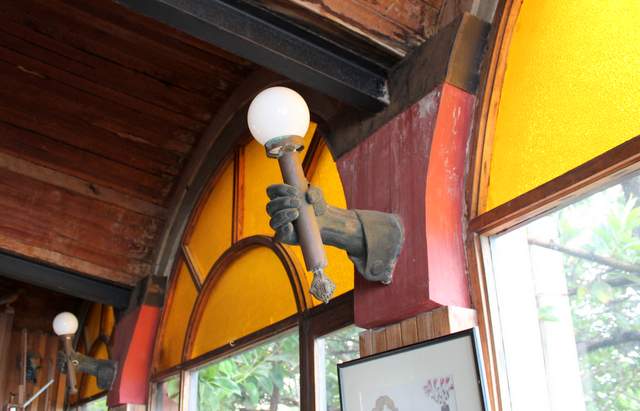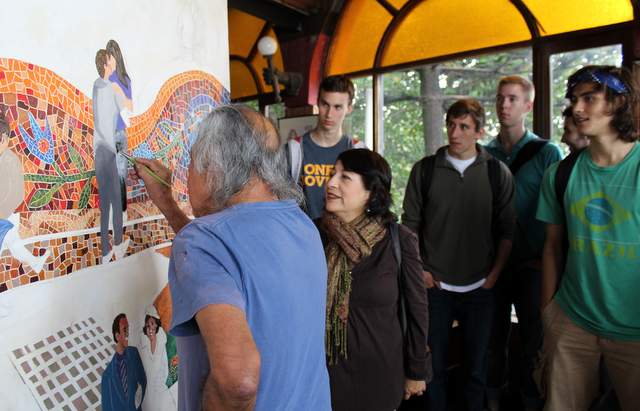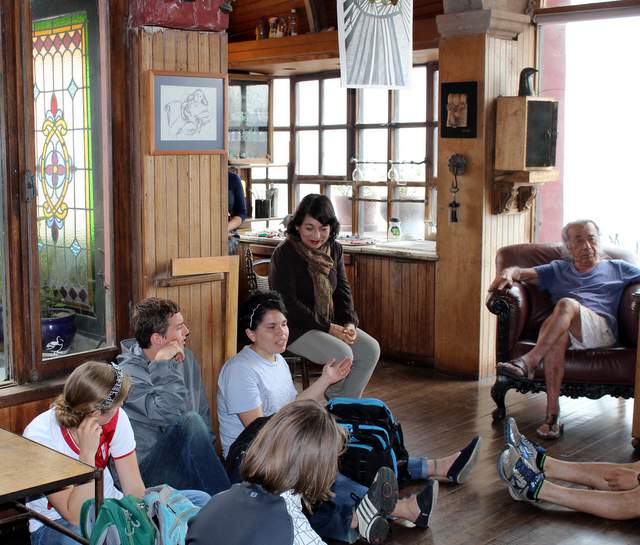A morning with Peru’s most famous artist
Goshen College students had the opportunity to view works of art, interview the artist and gain insights into the creative process during a visit to the home and studio of Victor Delfin, Peru’s leading painter and sculptor.

Delfin, 87, is considered Peru’s most accomplished artist. The youngest child in a poor family from a fishing village in northwestern Peru, Delfin graduated from the National School of Fine Arts in Lima in 1958. He served briefly as director of the Puno School of Fine Arts and then as an art teacher in Chile. Fifty years ago, Delfin established an eclectic art studio in the seaside district of Barranco, and he has been there ever since, producing art that has won many awards and honors.
Delfín, whose art is shown in major museums across South America, North America and Europe, works with many materials, including wood, metal, canvas, polychrome acrylics and aluminum – whatever strikes his fancy at the moment. He insists that he has no favorite medium. “No materials are preferable. All are good and from there one can make something good,” he told the students. “Michelangelo used marble; maybe that’s because there was a lot of marble around. In Peru there is a tradition of making pottery because there was a lot of clay around.”
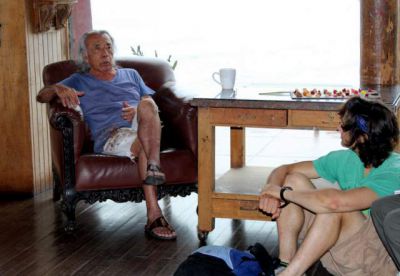
Asked by a student how he decided to make a living as artist, Delfin responded, “There’s a saying that artists aren’t made but are born. Some people have a talent for music, art or dancing. Mozart never went to school, but was a talented musician. One doesn’t decide this. It’s something already decided. It’s in the blood. This is no job or profession; it’s like a sickness.”
Delfin is especially known for large metalwork sculptures of birds, horses and other animals, as well as his sensual and colorful paintings. His most celebrated piece in Lima is “El Beso” (The Kiss), a 1993 sculpture of a couple locked in a passionate embrace. It is located in Lima’s Parque del Amor (Love Park), and couples like to pose beside it for photos after weddings and especially on Valentine’s Day.
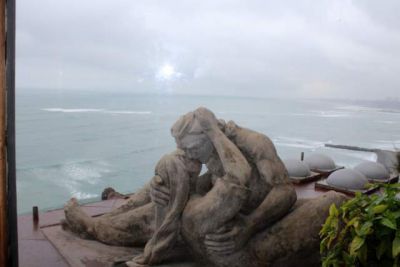
Delfin’s home is filled with art. Outdoors, students could see and touch many sculptures, including angels, a bull, a horse and a lion. A sitting room held a hand-made chess set and wood and leather chairs made by Delfin. Even the bathroom in his studio was a work of art, covered in a mosaic of original tiles. Wide windows in his studio overlook a great expanse of the Pacific Ocean, stunning even on a cloudy morning.
Students were attracted to Delfin’s many colorful paintings of birds and horses, the large outdoor sculptures and a series of paintings of shantytowns, including one that depicted the grim aftermath of a devastating tuberculosis outbreak. Students also viewed a painting and a huge wood carving that depicted the misery of Peru’s war against Shining Path terrorists in the 1980s and 1990s. Delfin has said his works often stray into such darker subjects as well as politics. He said he feels compelled to address social injustice and political themes in his art even though he conceded that collectors and museums seldom purchase such works; many end up permanently in his studio.
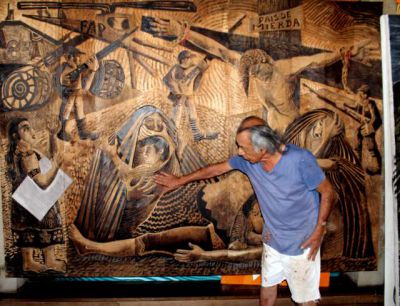
In the 1990s, he helped organize artists and writers in opposition to Peruvian President Alberto Fujimori, who had claimed dictatorial powers. Police injured Delfin twice during street protests. In 1995, Delfin participated in the Caucus for Peace, which brought together artists to protest the threat of conflict between Peru and Ecuador. When asked what motivated him to get involved in politics, Delfin told the students, “I believe a man or woman has a moral commitment to improve the living conditions of those around us. If you look around, you will see those living around us in worse conditions. If you want things to improve, you must get involved in politics.”
Delfin said that he is inspired by everything – from ideas that spring from his “inner soul” and the natural beauty that surrounds him to music and movies and the struggle for human rights amid in Peru much suffering. “My work, what I do, has a lot to do with the environment, how I was born and the ocean where I grew up, and the society of Peru. I’m not trying to copy it, but reflect that in my work.”
Students said they enjoyed the studio visit and conversation with Victor Delfin. They also left with a better understanding of Peruvian art and of artist driven to create to express himself and his vision of the world.



